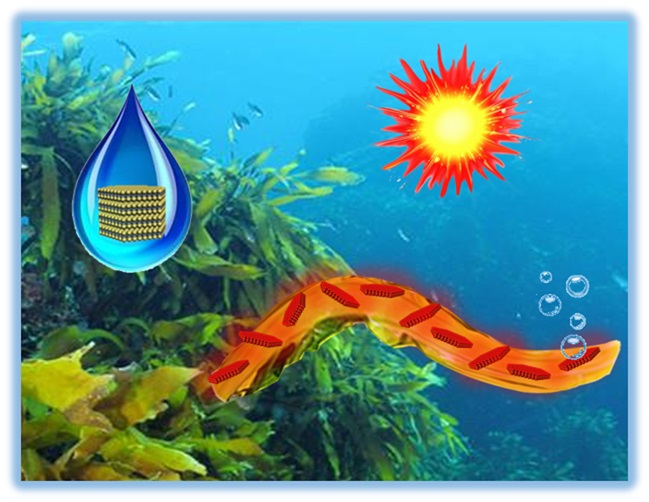
Ocean is always a vast resource treasury of human beings given by the nature. Alginate, a marine polysaccharide produced mainly from brown algae, shows high water solubility, high thickening property, film-forming property, gelatinizing property, biocompatibility and biodegradability. As one of the most abundant resources from the ocean, alginate is widely used in food industry, environment remediation, clothing and healthcare, however, it has been seldom attempted in the fields of nanotechnology and smart devices.
Recently, the Biomimetic Smart Material Group, led by Professor LI Chaoxu from the Qingdao Institute of Bioenergy and Bioprocess Technology (QIBEBT) of the Chinese Academy of Sciences, developed an approach for scalable production of exfoliated WS2 with unprecedented efficiency and further construction of biomimetic soft devices (Figure 1).
Surprisingly, the low-cost marine sodium alginate (SA) can assist to produce thin-layer WS2 efficiently through ultrasonically exfoliating bulk WS2 in aqueous solution, where an unprecedented concentration up to 1.39 mg ml−1 of thin-layer WS2 and a very high exfoliation yield of 18.5% were achieved. The perfect coupling between SA and WS2 may originate from strong interactions of H-bonding (–OH···SH–) and coordination (–C=O···W···O=C–). Therefore, the artificial solution-casted SA/WS2 film exhibited excellent mechanical properties with a high tensile strength and toughness superior to natural bio-composites (e.g. nacre, bone and dentin). More impressively, the film can be self-heated up to 300 oC within several seconds under low-dose radiation due to its high photo-thermal ability of WS2 nanosheets.
The water-absorption and cation-binding capacities of sodium alginate endow the composite film with smart actuating applications in the forms of photo-driven motor, walking robot and gripper, etc. For example, a soft gripper could be created with four stripes of actuating film as cantilevers. The grasping/releasing motion was driven by switching light radiation on and off. The responsiveness is pretty swift (e.g., 12 s to grasp and 10 s to release), being comparable with or even superior to other reported smart grippers. Again thanks to the super mechanical properties, the gripper could grab a steel ball with the weight 500 times heavier than the gripper itself.
The discovery of exfoliation technology may pave a new way to expand the applications of marine polysaccharide in biotechnology, material science and nanotechnology. These bio-inspired properties also imply huge potential in development of soft robotics and smart devices. This work was published recently on Advanced Materials.
 |
| Figure 1. Bioinspired coupling of inorganic layered nanomaterials with marine polysaccharides for efficient aqueous exfoliation and smart actuating devices (Image by QIBEBT). |

86-10-68597521 (day)
86-10-68597289 (night)

86-10-68511095 (day)
86-10-68512458 (night)

cas_en@cas.cn

52 Sanlihe Rd., Xicheng District,
Beijing, China (100864)

